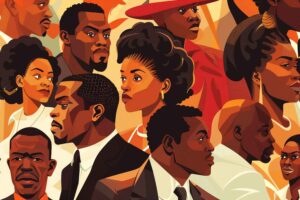Yr 8 visit to Central Gurdwara Manchester
Bridgewater School Yr 8 pupils recently enjoyed a visit to Central Gurdwara in Manchester – a Sikh temple – as part of their religious education/studies. A Gurdwara is a place where Sikhs come together for congregational worship. The visit was organised to enable the students to develop a greater understanding of other religions and cultures. In a modern Gurdwara, the Guru is not a ‘person’ but the book of Sikh scriptures called the Guru Granth Sahib. It is the presence of the Guru Granth Sahib that gives the Gurdwara its religious status, so any building containing the book is a Gurdwara. Tour guides from the Gurdwara and the Head Priest explained the customs and symbolism of the Sikh religion to the pupils and they also shared a traditional meal together. The students recounted and reflected on what they had learned once they returned back to school. 
“As we arrived we had to wash our hands and cover our heads with an orange bandana and take off our shoes – we wore bandanas to cover our hair to show a sign of respect. We learnt about the symbolic things that Sikhs wear and carry around with them on a daily basis. For example the men wear turbans to cover the uncut hair (Sikhs do not cut their hair so it becomes very long. Some Sikhs hair even touches the floor and they put in a turban to keep it tidy. The uncut hair is called ‘kesh’,the women can wear either a headscarf or veil or a turban. Baptised Sikhs carry a little blunt dagger called the ‘Kirpan’ in a little pouch that is crossed across their torso. They wear this because it reminds them of their history in battle for the fight for justice. As they are no longer used for fighting and are blunt, Sikhs are allowed by law to carry them. In Sikhism they believe everyone is equal no matter what gender, age, race or religion – this is shown by both women and men working in the ‘langar’ (communal kitchen), the langar symbolises that they are providing a service to other people.” Millie Coffey
“It has given me an appreciation of different religions and how many of them are fighting for the same thing – equality. I agree with many Sikh beliefs such as how everyone is equal. We were also taught about the five K’s, and the different Gurus. The five K’s are how you recognise a Sikh. Kesh is the uncut hair, Kara is a steel or iron bracelet, Kanga is a wooden comb, Kaccha is cotton underwear and Kirpan is a blunt steel sword. The Holy Book, the Guru Granth Sahib Ji is 1430 pages long! That is a very long read!” Charlie Wallwork




